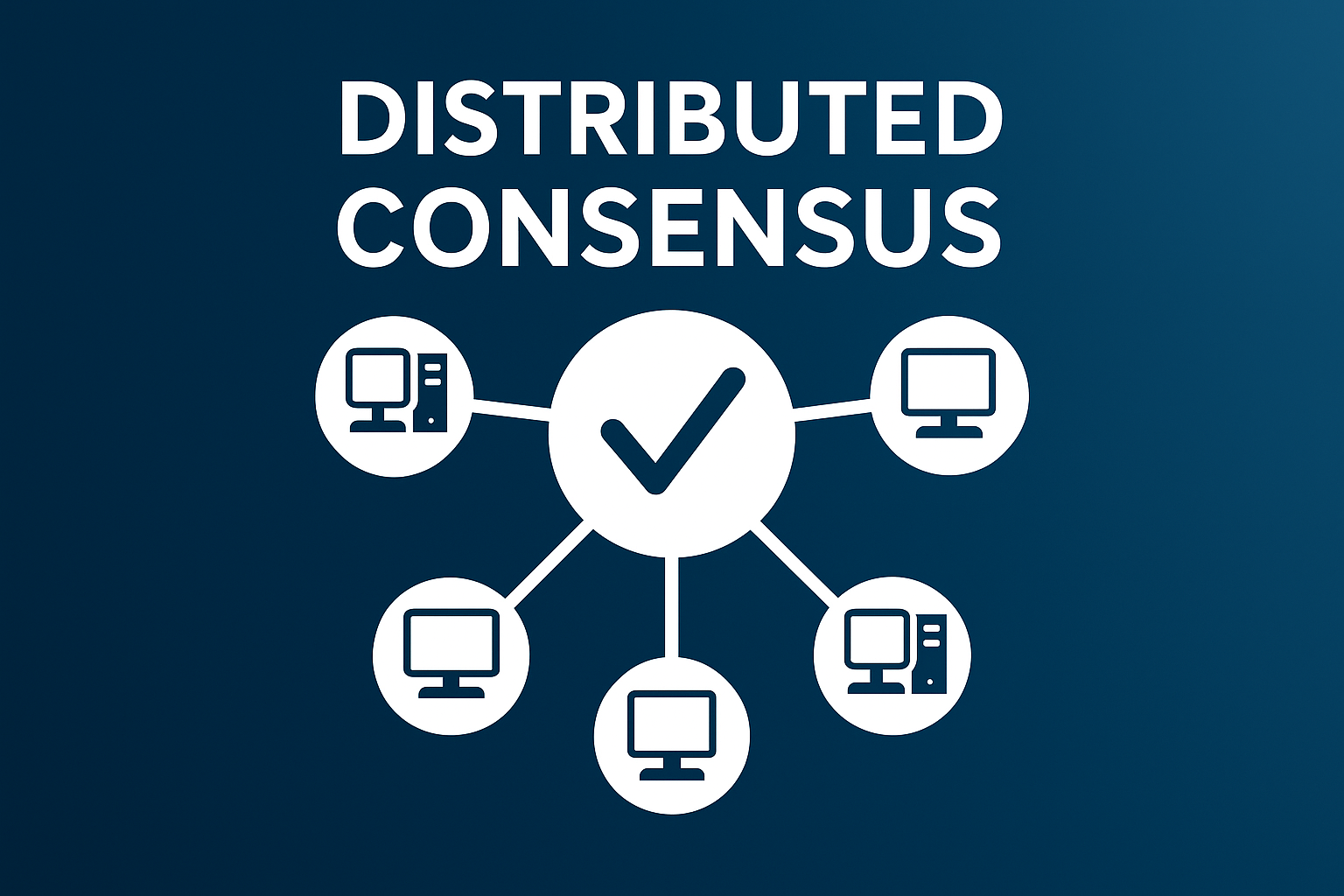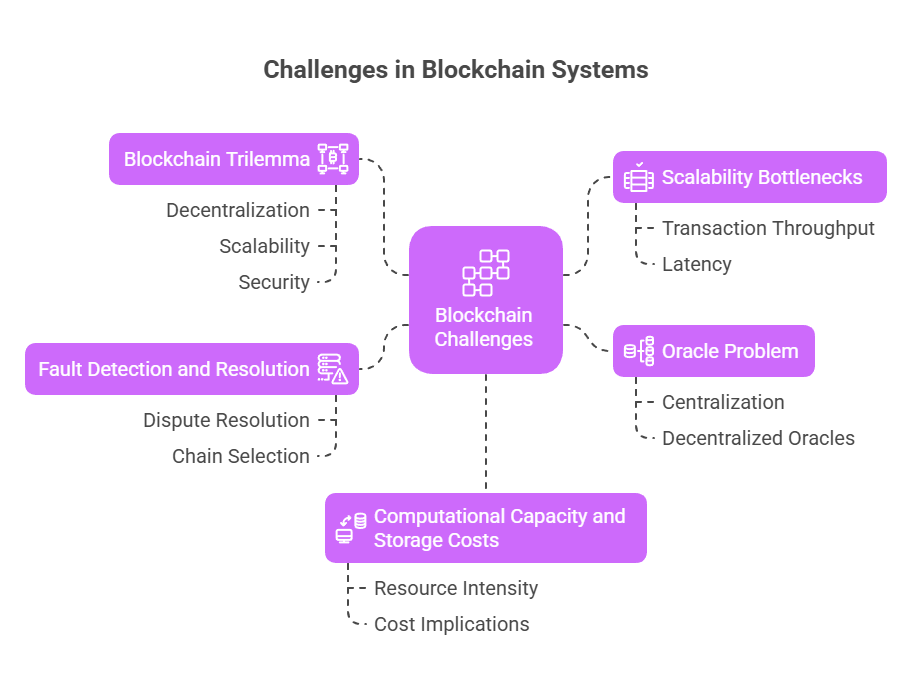Distributed Consensus Blockchain

Distributed Consensus Blockchain
A basic issue with distributed systems is distributed consensus, which is especially important for blockchain technology. It is the process of getting several, frequently mistrustful, participants or nodes in a network to agree on a single, legitimate state or value.
Importance Of Distributed consensus
Distributed consensus is crucial in a blockchain, a decentralized peer-to-peer system without a central authority, for a number of reasons. It guarantees:
- Once a block or transaction is put to the blockchain, it cannot be changed without altering succeeding blocks, which other nodes would notice. This is known as Immutability and Tamper Resistance. After data is added, consensus stops malicious changes.
- Single Version of Truth: Every node keeps an exact duplicate of the ledger, and the consensus process makes sure that these copies are all current and reliable.
- Trust in a Trustless Environment: It allows a group of mutually distrusting users to collaborate and verify transactions without needing a trusted third party.
- Fault Tolerance: The system can continue to operate correctly even if some nodes fail or behave maliciously.
You can also read Proof of Luck Knowing its Role in Efficient Block Validation
How it Works
The nodes in the network are notified when a user starts a transaction with their digital signature. A transaction is validated by one or more nodes, who then combine the transactions into blocks and send them out to other nodes. The group’s approval to add the block to the ledger is then ascertained by the consensus procedure. A new block is usually not accepted unless the majority of participants concur that it is legitimate. Creating an initial state (the genesis block) and deciding on the guidelines for adding other blocks are steps in this process. A flawless audit trail is produced by cryptographically connecting each block to the one before it.
Types of Consensus Mechanisms
Two major categories can be used to classify consensus algorithms:
- The next block must be proposed by nodes competing with one another in proof-based consensus mechanisms such as Nakamoto Consensus, Lottery-based Consensus, and Leader Election. A leader is chosen often at random and suggests a final value.
- Traditional Fault Tolerance-based (Voting-based Consensus): These rely on a system in which nodes publish and validate signed messages over a number of stages. After a predetermined amount of messages, an agreement is reached.
Distributed Consensus Algorithm
In order to publish the subsequent block, a user must solve a computationally demanding puzzle using Bitcoin, demonstrating that they have invested resources. Although it is immune to malevolent activity, its high processing power requirements can cause centralisation and energy consumption.
To have an opportunity to validate blocks, users “stake” their bitcoin as a security deposit. Compared to PoW, it is typically faster, more scalable, and energy-efficient. Delegated Proof of Stake (DPoS), in which participants elect delegates to verify transactions, is one variant.
Practical Byzantine Fault Tolerance (PBFT):
PBFT was created in 1999 and addresses the problem of consensus in asynchronous networks where Byzantine faults (malicious or arbitrary behaviour) are present. To come to an agreement, it employs a leader node and validator nodes that communicate with one another during the pre-prepare, prepare, commit, and reply stages. Tolerating F defective nodes requires at least 3F + 1 honest nodes. PBFT can be used with Quorum and Hyperledger Fabric.
Rafft:
The Crash Fault Tolerant (CFT) method is made to be easily understood and resilient to crash faults. Raft has an elected leader whose decisions are imitated by followers. Because there are no forks involved, it guarantees instant finality. Raft can be used with Hyperledger Fabric and Quorum. Because 2F + 1 nodes must function normally to withstand F crash faults, CFT algorithms mainly handle benign failures, in which a node merely crashes or becomes unavailable.
Paxos:
Leslie Lamport proposed yet another essential CFT algorithm. Using a two-phase protocol with proposers, acceptors, and learners a majority agreement among acceptors is crucial it reaches consensus in the event of a crash or network failure.
By using their identify as a “stake,” validaters are recognised and empowered to suggest new blocks. It doesn’t require mining and is frequently used in permissioned blockchains.
PoET, which was created by Intel, aims for equal probability among nodes by using a random timer to determine which node validates the subsequent block. For security and unpredictability, it frequently uses Trusted Execution Environments (TEEs), such as Intel SGX. While PoET SGX provides Byzantine Fault Tolerance and uses minimal CPU power, PoET CFT is strictly Crash Fault Tolerant and can operate on any processor through a simulated SGX environment.
Federated Byzantine Fault Tolerance (FBFT):
Stellar and Ripple use a variant of PBFT in which quorum slices groups of trusted nodes exchange messages in order to come to an agreement.
Tendermint:
PoS and a round-based voting system akin to PBFT, including leader rotation and a special termination method, are combined in this BFT replication method. Cosmos uses it.
You can also read Remix IDE Blockchain: Online Solidity Compiler For Ethereum
Directed Acyclic Graph (DAG):
DAGs are linked data structures where transactions verify each other, in contrast to conventional blockchains that consist of blocks in a chain. With few costs, this approach can solve efficiency issues and result in quicker, more scalable processes. DAG-like structures are used by Hedera Hashgraph and Avalanche.
Challenges and Trade-offs

Distributed Consensus Challenges
There are several trade-offs and difficulties in creating effective distributed consensus methods.
- The idea known as the “Blockchain Trilemma” holds that a blockchain system cannot be decentralized, scalable, and secure (consistent) all at once. One of these characteristics is frequently compromised in solutions. Permissioned blockchains, for instance, frequently sacrifice some decentralization in exchange for increased performance and scalability.
- Scalability Bottlenecks: Transaction throughput and latency are among the problems associated with bottlenecks. For example, all-to-all broadcast phases and a high leader burden make it difficult for traditional PBFT to scale to big networks. One suggested way to increase scalability is by sharding, which splits the network into smaller segments that handle transactions concurrently.
- The Oracle Problem: When smart contracts rely on a single reliable third-party data, they frequently need to communicate with off-chain data, which creates a point of centralisation. In order to solve this, decentralised oracles that use aggregation algorithms and data from several are being developed.
- Fault Detection and Resolution: Systems need to have ways to identify and settle disputes when nodes vary about the system’s current state, frequently by selecting the “longer” or most “worked-on” chain.
- Computational Capacity and Storage Costs: Complete decentralization can be resource-intensive, requiring a large amount of computing and storage capacity from each participating node. This can be difficult because of the accompanying expenses.
You can also read Ganache Uses: Local Testing, Debugging And Mainnet Forking
